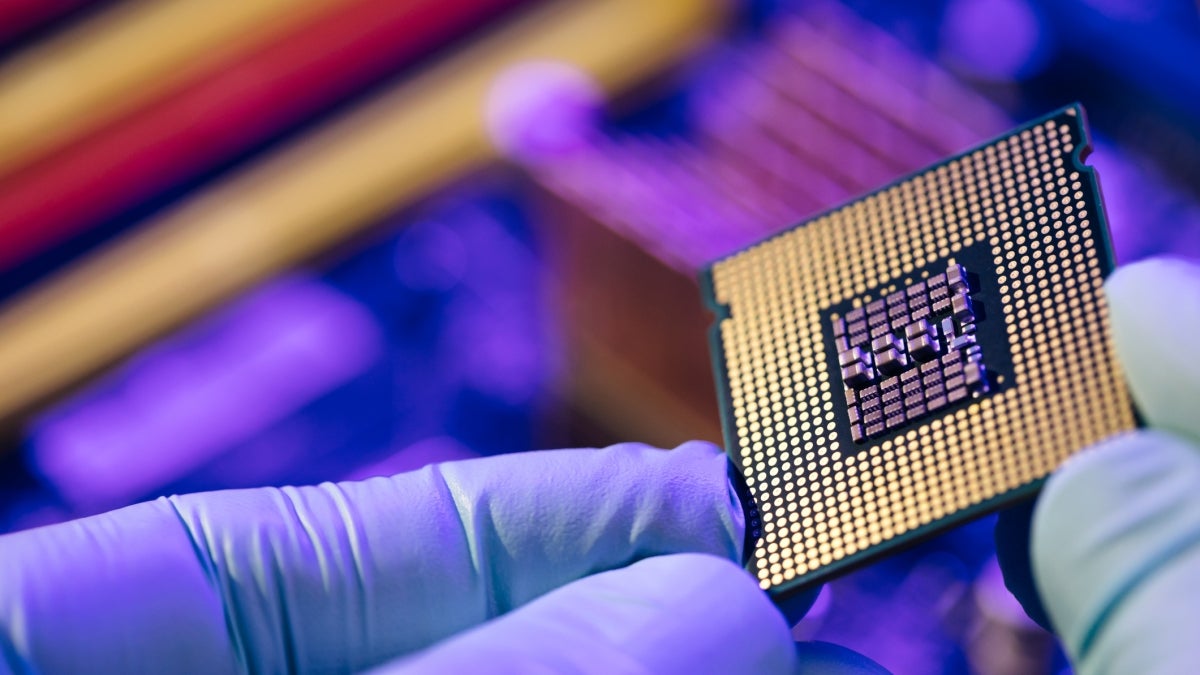Semiconductors power the systems through which society functions: communications, transportation, manufacturing, defense and more. But the U.S. global share of microchip production has fallen from 37% to 12% during the past three decades, and disruptions to their supply from East Asia during the COVID-19 pandemic revealed glaring economic and security vulnerabilities across America.
As a response, the federal government enacted the $52 billion CHIPS and Science Act last year to begin restoring domestic manufacturing of advanced semiconductors.
“However, it would be prohibitively expensive to bring every element of the semiconductor supply chain back to the United States. Some estimates suggest it would cost a trillion dollars,” said Kevin McGinnis, managing director for Strategic Technology Initiatives at Arizona State University.
“So we need to think about how to work with regional allies to build supply chain resiliency. For example, geographic proximity, a strong manufacturing sector and favorable terms of trade all uniquely position Mexico to join a U.S.-led global supply chain reshuffle.”
The value of such collaboration formed the focus of an online panel discussion moderated by McGinnis and presented on March 15 by Future Tense and Arizona State University’s Convergence Lab.
The event, North America’s Semiconductor Moment, reflects ASU’s desire foster the innovative microelectronics sector initiatives with industry, government and academic partners — including a recent memorandum of understanding signed by ASU President Michael Crow and Esteban Moctezuma Barragán, the Mexican Ambassador to the U.S., to create a cross-border training alliance.
Sharing expert perspectives with McGinnis during the hourlong forum were Rina Pal-Goetzen, director of global policy for the Semiconductor Industry Association; David Talbot, associate director for global policy for the Milken Institute; and Gerardo Lameda, head of cooperation and education affairs for the Embassy of Mexico in the United States.
Pal-Goetzen noted that the CHIPS Act includes $500 million to support international development where complementary expertise and competitive advantage can be maximized across the nearshore supply chain. She said the industry looks for a few key factors when evaluating sites for expansion.
“First would be the trade environment. How easy is it to move items in and out of the country? A chip sometimes goes to hundreds of different locations before becoming a finished product,” she said. “Second is the business environment, including taxes, customs times and ease of permitting issues.”
Other factors include a reliable supply of water and electricity as well as the availability of a workforce for training and development.
Pal-Goetzen said labor is now particularly important since the industry is facing shortages ranging from 50,000 to 100,000 people in almost every country where it operates and there is no way to address that massive shortfall in any one location.
Panelists agreed that Mexico represents a strong partner for the U.S. across each of these factors, with Talbot from the Milken Institute noting a particular opportunity in labor-intensive aspects of the semiconductor production.
“The U.S. is really going to have a difficult time reshoring the back end of manufacturing processes — assembly, testing and packaging, or ‘ATP' — and then also device assembly,” Talbot said. “The U.S. has only 3% of ATP capacity, compared to more than 80% in Asia. So these data points really underscore the opportunity available for Mexico as the U.S. looks to shift supply chains, or at least diversify them.”
Lameda agreed that Mexico’s skilled labor force is ready to support a more self-sufficient North American semiconductor ecosystem, noting that the country has one of the largest percentages of university graduates in engineering among OECD countries. But he said reasons for expanded partnership are far broader.
“Mexico has strategic proximity to the main semiconductor facilities in the U.S., in Arizona, Texas and California,” Lameda said. “We also have developed efficient infrastructure and connectivity along one of the busiest borders in the world, in terms of trade and customs. As well, the U.S. and Mexico have had strong bilateral relations for decades. Nobody understands the American way of doing business better than Mexico. This all means Mexico is ready to complement the U.S. semiconductor industry and its supply chain.”
Toward that end, Mexican President Lopez-Obrador joined U.S. President Biden and Canadian Prime Minister Trudeau at the North American Leadership Summit in January, where the leaders announced that the first-ever trilateral semiconductor forum will take place this year to adapt government policies and increase investment in regional semiconductor supply chains.
ASU’s McGinnis noted that the university will be partnering with the Semiconductor Industry Association, the Embassy of Mexico and other key stakeholders to support this important forum and discuss next steps in strengthening North America's semiconductor ecosystem.
Top photo courtesy iStock/Getty Images
More Science and technology

4 ASU researchers named senior members of the National Academy of Inventors
The National Academy of Inventors recently named four Arizona State University researchers as senior members to the prestigious organization.Professor Qiang Chen and associate professors Matthew…

Transforming Arizona’s highways for a smoother drive
Imagine you’re driving down a smooth stretch of road. Your tires have firm traction. There are no potholes you need to swerve to avoid. Your suspension feels responsive. You’re relaxed and focused on…

The Sun Devil who revolutionized kitty litter
If you have a cat, there’s a good chance you’re benefiting from the work of an Arizona State University alumna. In honor of Women's History Month, we're sharing her story.A pioneering chemist…


